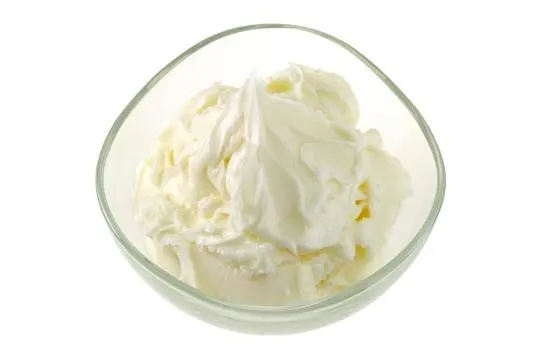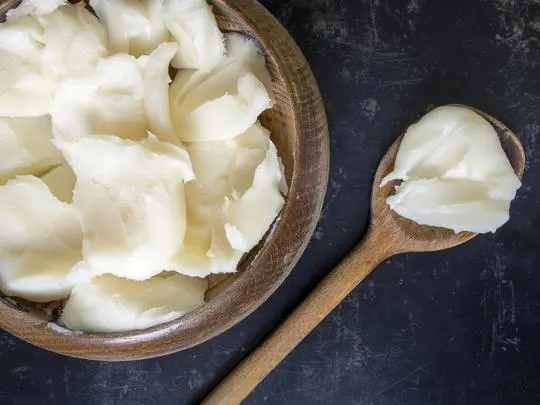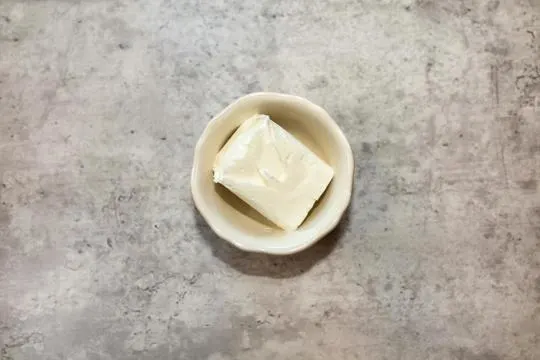In the kitchen, we often find ourselves staring at two tubs: shortening and lard. What’s the scoop? They’re both fats, right?
Well, grab your aprons, because we’re about to dive deep.
Shortening is vegetable-based. Think crisp cookies. Lard? It’s all pig, baby. It brings flaky pie crusts to life.
Here’s the kicker: My grandmother swore by lard for her legendary biscuits. Yet, here I stand, a shortening fan for my fluffy cakes.
Why does this matter? Texture, friends. And flavor.
We’ve all been there, standing in a grocery aisle, confused. It’s okay. Today, we clear that up. Ready?
What is Shortening?

Shortening, a popular cooking and baking item, is a solid fat with the special ability to hold air bubbles and create a tender crumb.
It’s made from hydrogenated vegetable oils, which transform into a semi-solid state to improve shelf life and provide a creamy consistency.
Shortening has advantages over other fats, such as lard.
It has a high melting point, so it remains stable while deep frying or sautéing.
Its neutral taste blends well with other ingredients, making it great for flaky pastries and pie crusts.
It also helps with texture by inhibiting gluten development which is important for desserts like cookies or cakes.
Shortening should be stored in an air-tight container away from heat.
When measuring, pack it tightly into a measuring cup/spoon unless stated otherwise.
Shortening is a versatile fat with many benefits.
Its texture, stability, and neutrality make it a favorite for recipes.
So give it a try and see the difference it makes.
What is Lard?

What is lard? It’s a type of fat derived from pigs or pork.
People often use lard in cooking and baking as it adds flavor and moisture.
Lard is creamy and smooth, making it easy to work with.
You can render it at home or buy pre-rendered lard from grocery stores.
For centuries, lard has been integral to many cuisines.
It has a high smoke point – which means it doesn’t burn or smoke when exposed to high heat.
Hence, it’s perfect for frying and sautéing.
It also gives food a rich flavor.
Surprisingly, lard can be used as a substitute for butter or shortening.
It contains high fat content which helps keep baked goods moist.
Some bakers say pastries made with lard have a superior taste.
Health-wise, lard is beneficial, too.
Studies show the saturated fat in pork fat may not negatively affect cholesterol levels, like other saturated fat sources.
However, like any fat, moderation is key.
In a nutshell, lard is a great versatile ingredient.
Whether you’re making bacon or pie crust, give lard a shot for an extra burst of flavor.
Differences Between Shortening and Lard

Shortening and lard may be alike, but they have some big differences.
Source and Composition
Shortening and lard may look similar, but they have unique differences.
Shortening is made from hydrogenated vegetable oils.
Lard comes from pig fat.
These variations make different tastes and textures.
Both give necessary fats, but their sources are different.
Shortening often includes soybean, cottonseed, or palm oil.
It is hydrogenated, a process which turns liquid oils into solid fats.
Lard comes from rendered pork fat.
The composition of shortening and lard also differs.
Shortening contains more trans fats due to the hydrogenation.
Trans fats can be bad for health.
Lard has more saturated fats, seen as less harmful.
Shortening has a neutral taste and makes flaky textures.
It’s solid consistency is useful for pie crusts and cakes.
Lard adds a savory flavor and makes tender textures.
It’s usually used in traditional dishes such as biscuits or fried foods.
In conclusion, shortening and lard are different in source and composition.
This causes variations in flavor and texture when cooking.
Texture and Consistency
Shortening and lard have an important role in cooking.
Both can add moisture and tenderness, but they’re not the same.
Shortening is made from veg oils.
It’s solid, yet melts easily when heated.
This makes it great for light pastries and cookies.
It also distributes evenly through dough, making a consistent texture.
On the other hand, lard is rendered from pig fat.
It’s solid at room temp, but softer and more pliable.
Plus, it has a higher fat content, making it good for frying, roasting, and savory recipes.
The flavor of shortening is neutral, allowing other ingredients to come through.
Whereas lard has its own unique savory taste, enhancing the overall flavor.
When deciding between shortening and lard, consider your desired outcome and flavor.
Do you want flakiness or richness? That’ll help determine which option works best.
Flavor Profile
Shortening and lard have a distinct taste, yet they share some commonalities.
Shortening has a neutral flavour, that lets the other flavours of the dish be noticed.
On the other hand, lard adds a rich and savoury flavour that boosts the overall taste.
Shortening makes baked goods tender, while lard gives them a flaky and crispy texture.
When deciding between them for cooking, it is essential to keep these aspects in mind.
Cooking Applications and Uses
Shortening and lard have different uses in cooking.
Shortening is great for baking, like making pastries and biscuits.
It melts at a high temperature so the end result is flaky and crumbly.
Flavor-wise, shortening is neutral.
Lard, on the other hand, adds flavor and moisture to dishes.
It has a high smoke point, ideal for frying.
Lard also adds a unique taste.
Before you choose between them, consider the health implications.
Shortening has trans fats that increase the risk of heart disease.
Lard is made from animal fat and has more saturated fat.
Weigh your options carefully.
Similarities Between Shortening and Lard

Shortening and lard can be confusing.
Both are solid fats used in cooking and baking.
But, they have distinct qualities.
Shortening is vegetable-based fat.
It has a smooth texture and a high smoke point, making it perfect for frying and sautéing.
Lard is animal fat from pig fat.
It adds moisture and flavor to baked goods.
Nutrition-wise, shortening has no cholesterol.
It’s often trans-fat free when labeled as such.
Lard may contain cholesterol and higher levels of saturated fat.
Shortening comes from plants like soybean or cottonseed oil.
On the other hand, lard is from animals raised for food.
Nutritional Differences
Shortening and lard are both used to cook and bake.
But they have some key differences nutritionally.
Shortening is a veggie-based fat which has been hydrogenated.
Lard, on the other hand, is made from animal fat – usually pork – and is solid due to its high saturated fat levels.
Shortening’s main component is trans fats.
These are bad for heart health.
Lard, however, has monounsaturated fats which may improve heart health.
Calorie-wise, shortening is higher than lard.
This is due to it being processed and having added preservatives.
Vitamins and minerals differ too.
Shortening lacks essential nutrients.
Lard has small amounts of Vitamin D, which is good for bones.
Taste-wise, shortening is neutral while lard adds a savory flavor.
So it’s a popular choice for frying or roasting meat.
It’s important to note that both lard and shortening should be eaten in moderation.
The American Heart Association recommends limiting intake of solid fats like these.
Substituting Shortening for Lard and Vice Versa
Shortening and lard can be swapped in recipes.
Both are fats, but different.
Shortening is made from hydrogenated vegetable oil.
Lard is pork fat.
They have different tastes and textures – this can change the finished treat.
When you use shortening instead of lard, remember it melts at a higher temperature.
This means your treats won’t spread as much and could be less flaky or tender.
If you use lard instead of shortening, remember it has a pork flavor.
This may be good for savory dishes, but not for sweet recipes.
Both shortening and lard are high in fat.
So, if you’re watching fat intake, use them sparingly.
Vegans and vegetarians should go for shortening over lard.
Conclusion
It’s plain to see that shortening and lard possess distinctive traits and uses in cooking.
Shortening is a favorite for baking, as its melting point is high and it produces a flaky texture.
Lard, on the other hand, has a unique flavor and is great for frying.
It’s essential to take into account the healthiness of these ingredients, as both are full of saturated fats.
Ultimately, the selection between shortening and lard is based on preference and the dish being cooked.
Remember, moderation is the key when consuming these fatty ingredients.

Leave a comment